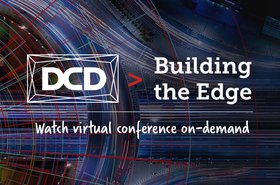We sat down with Mike D Kail, CTO of Everest, ahead of our panel ‘Panel: David vs Goliath - how new models at the edge are shaking up the market’. We talked about Everest’s role in the rollout of edge, and how they’re using their business model to make a mark in the industry.
Everest is a fintech cloud platform primarily focused on digital identity, coupled with an ethereum based wallet. Mike and his team have been working hard to establish themselves as a challenger brand, making waves in the fintech industry and revolutionising digital identity.
How is Everest using the edge?
Kail says that the world is a very centralized construct, so the edge is a step towards decentralizing platforms and services. Everest is taking a decentralized block chain and distributed storage to keep user’s identity data as close to their proximity as possible.
What Everest is doing is globally applicable, and has been extremely successful in many emerging markets. Kail says that many emerging markets run into the same troubles, what he called the ‘unbanked and unidentified’. This is a market for Everest to tap into, as they can provide effective services where infrastructure, both physical and digital, is perhaps more strained.
Moving towards a decentralized platform
Everest started out as what is now a household name in the identity sector - EverID. Identity was foundational to the business, and remains an extremely important component of the business model. EverID, and Everest continue to give people proper control of identity and transactions.
For Kail and his team, their main focus now is to reduce friction and the high cost of cross-border remittances. These are the next steps they are taking to take the organization to the next level.
The impacts of Covid-19
Like many businesses in the technology sector, Covid-19 has presented both opportunities and setbacks. For Everest, their services have become even more vital to those living in emerging markets across the world, the ability to transfer vital funds to their family members is key to their health and wellbeing.
More broadly, Kail says that digital transformation within the fintech sector has been accelerated. Many organizations have been finding that they need more automated solutions rather than traditional brick and mortar solutions to accelerate those efforts. He believes that the rollout of 5G and deployment of edge will create faster and more in-depth experiences, and companies who leverage it early will benefit.
Kail believes Everest is in a good position to take advantage of this digital transformation. Larger organizations may not be able to move as quickly to capitalize on these changes. Smaller, more nimble companies like Everest will be able to react and move quicker.
Changing the paradigm
Everest faces a unique challenge, in the sense that their platform looks to shake up the industry and flip fintech on its head. This has involved Kail and his team being able to find the right people within organizations who are willing to buy into changes in processes and traditional methods like those Everest offer.
Kail says in a broader sense, if you as an organization are not prepared for change, and are not prepared for events like Covid-19, your organization will not fare well. You need to be both prepared and adaptable. Everest is adaptable and resilient because of the decentralized nature of the product. It is a small company that is able to exact a global footprint.
A new way forward
Kail says the edge is distributed, not decentralized, and won’t be used solely by the challenger brands of the world. For example, hyperscalers may use this as a separate channel for their business operations. As Kail mentions, not everything will be handled at the edge, so organizations need to look at the economic opportunities edge providers as it relates to particular services.
The main challenge for the edge is the lack of ubiquity of internet connectivity across the globe. Where there are existing technical markets, edge will probably be more successful. Kail thinks that governments and entities will need to solve connectivity issues much more rapidly if they want to utilize the edge. For many countries, edge rollout may happen in tandem with upgrades of infrastructure.
Lessons learnt
Now that EverID is a household name in digital identity, Kail is looking towards the future and how he can take learnings from the past ten years forward. He says there's been a lot of technical advance but a lot of things have also stayed the same. For Everest in particular, putting the power of identity in the hands of users has seen how change can be effected through offering new services - as there is more uptake the opportunity to change further will be greatly accelerated.
On a more interpersonal level, Kail discussed how being a completely remote organization has instilled key principles of trust and respect as key foundational elements of Everest. He says organizations need to be able to collaborate and communicate, early and often.
Kail looks forward to learning from the other panellists in our panel: David vs Goliath - how new models at the edge are shaking up the market. Make sure you tune in on May 28 to hear our discussion with three edge pioneers.

